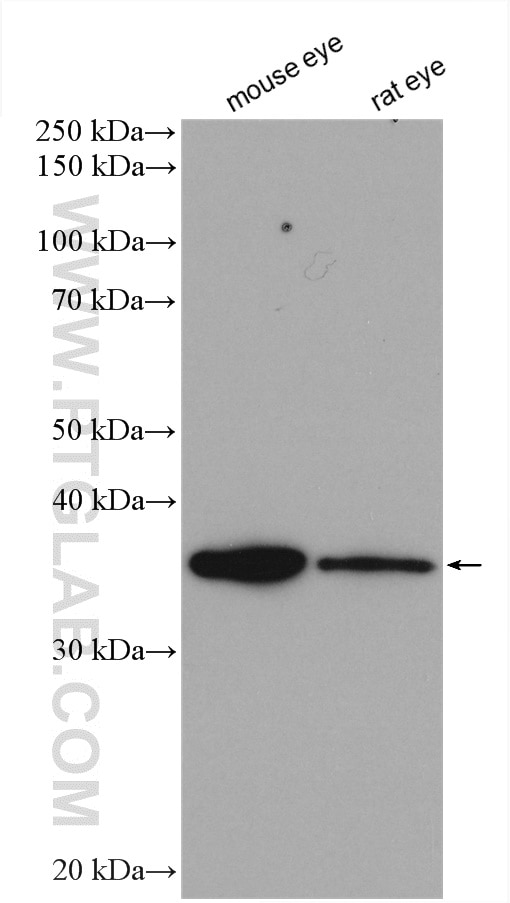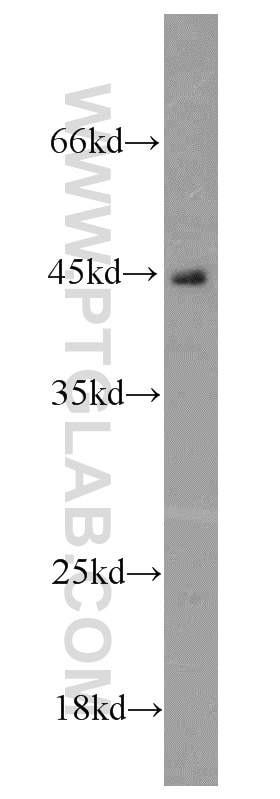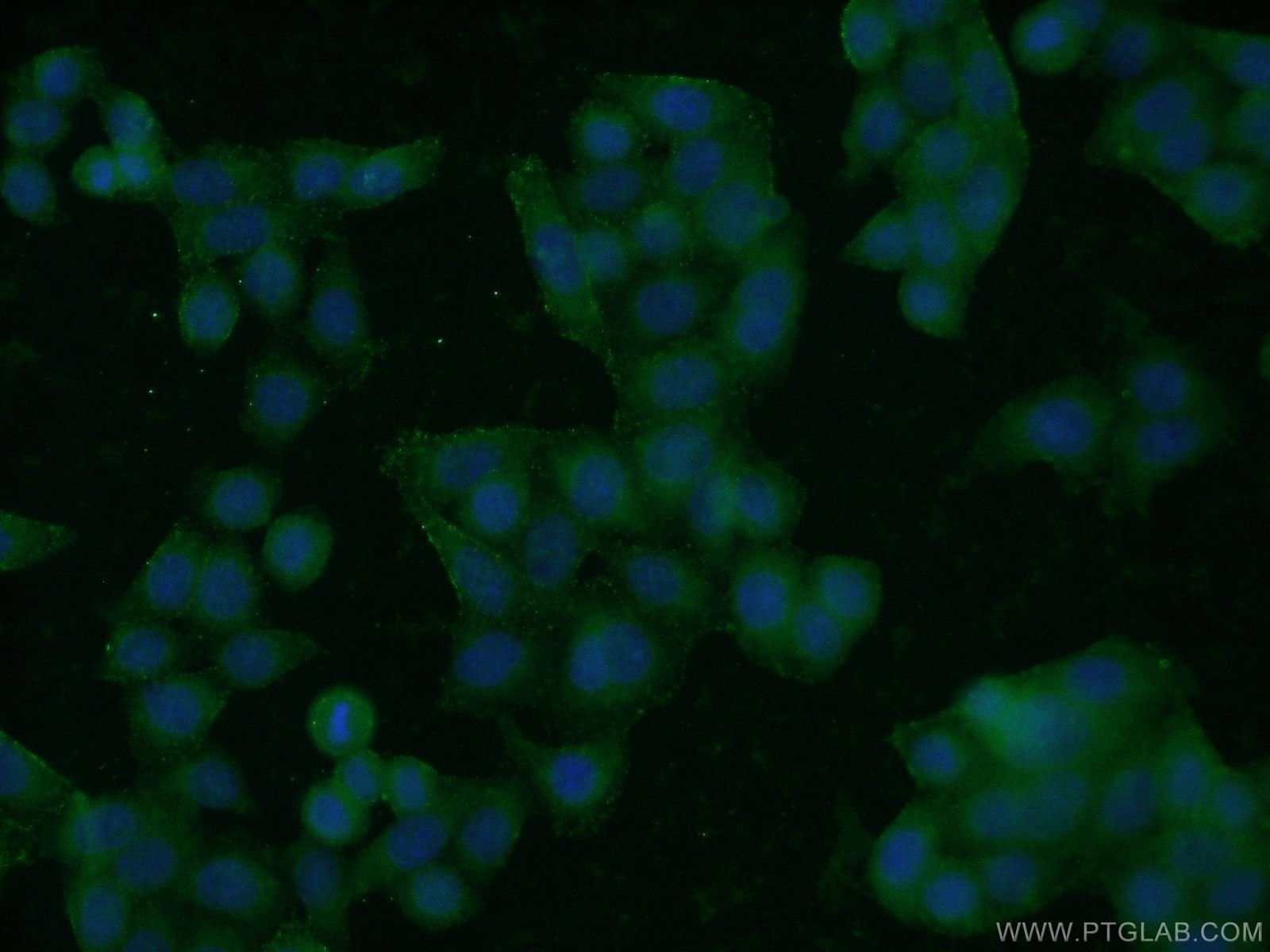Anticorps Polyclonal de lapin anti-ROM1
ROM1 Polyclonal Antibody for WB, IF, ELISA
Hôte / Isotype
Lapin / IgG
Réactivité testée
Humain, rat, souris
Applications
WB, IHC, IF/ICC, ELISA
Conjugaison
Non conjugué
N° de cat : 21984-1-AP
Synonymes
Galerie de données de validation
Applications testées
| Résultats positifs en WB | tissu oculaire de souris, cellules HeLa, tissu oculaire de rat |
| Résultats positifs en IF/ICC | cellules HeLa |
Dilution recommandée
| Application | Dilution |
|---|---|
| Western Blot (WB) | WB : 1:500-1:3000 |
| Immunofluorescence (IF)/ICC | IF/ICC : 1:20-1:200 |
| It is recommended that this reagent should be titrated in each testing system to obtain optimal results. | |
| Sample-dependent, check data in validation data gallery | |
Applications publiées
| WB | See 6 publications below |
| IHC | See 3 publications below |
| IF | See 4 publications below |
Informations sur le produit
21984-1-AP cible ROM1 dans les applications de WB, IHC, IF/ICC, ELISA et montre une réactivité avec des échantillons Humain, rat, souris
| Réactivité | Humain, rat, souris |
| Réactivité citée | Humain, souris |
| Hôte / Isotype | Lapin / IgG |
| Clonalité | Polyclonal |
| Type | Anticorps |
| Immunogène | ROM1 Protéine recombinante Ag17049 |
| Nom complet | retinal outer segment membrane protein 1 |
| Masse moléculaire calculée | 351 aa, 37 kDa |
| Poids moléculaire observé | 37-45 kDa |
| Numéro d’acquisition GenBank | BC008100 |
| Symbole du gène | ROM1 |
| Identification du gène (NCBI) | 6094 |
| Conjugaison | Non conjugué |
| Forme | Liquide |
| Méthode de purification | Purification par affinité contre l'antigène |
| Tampon de stockage | PBS avec azoture de sodium à 0,02 % et glycérol à 50 % pH 7,3 |
| Conditions de stockage | Stocker à -20°C. Stable pendant un an après l'expédition. L'aliquotage n'est pas nécessaire pour le stockage à -20oC Les 20ul contiennent 0,1% de BSA. |
Informations générales
ROM1 (also known as TSPAN23) is a transmembrane protein present in photoreceptor outer segment disc membranes. ROM1 belongs to the tetraspanin superfamily, which are characterized by the presence of four conserved transmembrane regions. Tetraspanins have been involved in diverse processes such as cell activation and proliferation, adhesion and motility, differentiation, and cancer. ROM1 is required for rod photoreceptor viability and the regulation of disk morphogenesis (PMID: 10802659). It may function as an adhesion molecule involved in stabilization and compaction of outer segment disks.
Protocole
| Product Specific Protocols | |
|---|---|
| WB protocol for ROM1 antibody 21984-1-AP | Download protocol |
| IF protocol for ROM1 antibody 21984-1-AP | Download protocol |
| Standard Protocols | |
|---|---|
| Click here to view our Standard Protocols |
Publications
| Species | Application | Title |
|---|---|---|
Proc Natl Acad Sci U S A Accumulation of non-outer segment proteins in the outer segment underlies photoreceptor degeneration in Bardet-Biedl syndrome. | ||
Elife Merging organoid and organ-on-a-chip technology to generate complex multi-layer tissue models in a human retina-on-a-chip platform. | ||
Cell Mol Life Sci A look into retinal organoids: methods, analytical techniques, and applications. | ||
J Biol Chem The myosin-tail homology domain of centrosomal protein 290 is essential for protein confinement between the inner and outer segments in photoreceptors. | ||
PLoS One Differential requirement of NPHP1 for compartmentalized protein localization during photoreceptor outer segment development and maintenance. |




